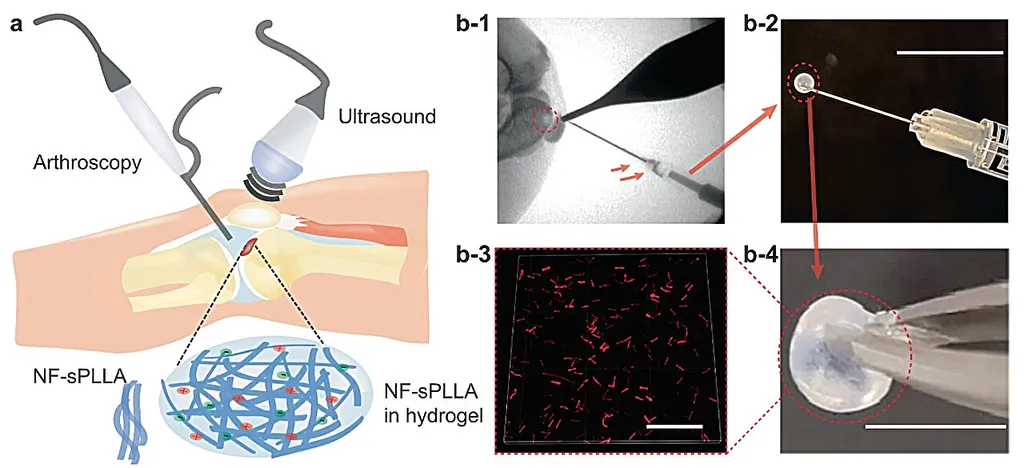In the realm of biomedical engineering, a groundbreaking study has emerged that could revolutionize cartilage repair and potentially open new avenues in the energy sector. Researchers, led by Shangtong Jiang from the Department of Biomedical Engineering at Huazhong University of Science and Technology in China, have developed a biodegradable, bioenergetic-active hydrogel (BAH) that accelerates extracellular matrix (ECM) synthesis, a crucial process in cartilage repair.
The study, published in the journal *Bioactive Materials* (translated as *活性材料* in Chinese), introduces a novel approach to cartilage repair by enhancing the energy metabolism of chondrocytes, the cells responsible for producing and maintaining cartilage. The hydrogel, designed with injectability and in situ photo-crosslinking capabilities, elevates the cellular energy metabolic state of chondrocytes by boosting mitochondrial membrane potential and adenosine 3-triphosphate (ATP) production.
“By modulating energy metabolism, we’ve seen a significant improvement in the synthesis of extracellular matrix components, which are vital for cartilage repair,” said Shangtong Jiang, the lead author of the study. This enhancement is not just a minor improvement; the BAH upregulated key genes ACAN and Col2α1 to 189% and 138% of the collagen hydrogel (ColH) group, respectively, promoting the synthesis of hyaline-like chondroid ECM in 3D-cultured microtissues.
The implications of this research extend beyond the medical field. The energy sector could benefit from the understanding and manipulation of bioenergetic processes. “The principles behind enhancing cellular energy metabolism could potentially be applied to other areas where energy efficiency and production are critical,” Jiang added. This could lead to innovative energy solutions inspired by biological systems.
In a rabbit cartilage defect model, the BAH significantly enhanced ECM synthesis, with a characteristic chondrocyte arrangement resembling native articular cartilage. Immunohistochemical analysis revealed that BAH greatly enhanced ACAN and type II collagen production to 356% and 205% of the ColH group after 12 weeks.
The study’s findings present a promising therapeutic approach for articular cartilage injuries and could pave the way for future developments in bioenergetic-active materials. As the energy sector continues to seek sustainable and efficient solutions, the insights gained from this research could inspire novel technologies and applications.
This research not only advances our understanding of cartilage repair but also highlights the potential of bioenergetic-active materials in driving innovation across various industries. The journey from laboratory breakthroughs to real-world applications is always challenging, but the potential impacts are too significant to ignore. As we delve deeper into the intricacies of cellular energy metabolism, we may unlock new possibilities for both medical treatments and energy solutions.

